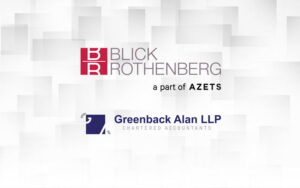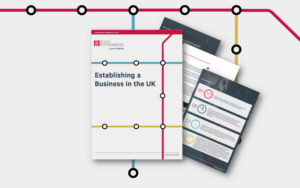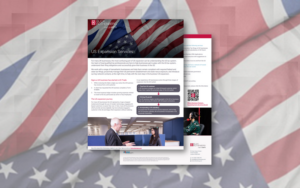
Spring Statement 2025 – Analysis
As promised, the Chancellor stated right from the get-go that the Spring Statement would not contain any tax changes. However, there was no detracting from the gloomy outlook
26 March 2025 | Authors: Genevieve Morris | John Bull
As promised, the Chancellor stated right from the get-go that the Spring Statement would not contain any tax changes.
However, there was no detracting from the gloomy outlook. She made some seemingly naïve assumptions around the impact of previously announced National Insurance (NIC) increases. The growth forecast was halved for this year to a mere 1% but was predicted to increase next year. That remains to be seen once the impact of last year’s changes start to be felt in April 2025.
Instead, her speech focused on restoring economic stability and fiscal responsibility by closing the tax gap. But what does this actually mean? Well, in a nutshell, it’s a package of measures aimed at ensuring taxpayers pay the right amount of tax and HMRC’s ability to take action against those who are non-compliant, with a consultation on behavioural penalties opened today.
Tax Evasion
Reading through the small print, there is nothing new here. Tax evasion has been the target of multiple previous Governments. With the current anticipated cuts across the civil service, HMRC have been promised an additional 500 compliance staff but as to whether they will help with targeting tax evasion will depend on whether they are sufficiently trained for this. As with many individuals and businesses who deal with HMRC on a day-to-day basis, an improvement in service levels should be top of the list.
Getting Britain Building
Seemingly the Chancellor is reliant on getting Britain building as the answer to the gloomy state of the economy. This may be misplaced bearing in mind the increase in Stamp Duty Land Tax (SDLT) from 1 April 2025 which will impact first-time buyers significantly and all homebuyers across the board. It is predicted that the average SDLT bill will add a further £6,000 to the cost of buying a house.
Employers NIC
Then there is the impact of the increase in employer’s NIC from 6 April 2025, which will impact businesses and the employment market significantly. We have yet to see the real impact of these increases, but it is anticipated that many businesses will not be able to afford to employ as many people, and salaries will also be impacted. It can only be anticipated that unemployment will increase across the board, as will prices, impacting inflation.
Roadmaps and Consultations
On a slightly more positive note, the Spring Statement has reinforced the Government’s commitment to the Corporate Tax Roadmap which seeks to bring stability and provide a predictable tax environment to UK businesses.
In addition, the Government has launched a number of consultations, including a revised system of advance clearances in the Research & Development tax relief system and a new process to give major investment projects greater advanced tax certainty. These will be welcomed by many innovative businesses who have found the recent changes to the R&D regime onerous to navigate and by businesses that are investing in major projects.
It is a shame, however, that the Chancellor didn’t consider changes to the Corporate Interest Restriction rules, which can deny Corporation Tax relief for businesses with high borrowing costs. The de minimis £2m threshold has not increased since the base rate was 0.25% and, with interest rates currently significantly higher, many more businesses are seeing tax relief on their borrowing costs capped and this is a barrier to investment.
There was no specific mention on transfer pricing in the Spring Statement other than the aim to provide certainty for Cost Contribution Arrangements (CCAs), which are contractual agreements between group companies to share the costs of developing certain assets and can be complex from a transfer pricing perspective.
While this may be initially comforting, there may still be future consultations on lowering the small and medium exemption threshold for transfer pricing. Proposals for further reforms to transfer pricing, permanent establishments and diverted profits tax remain yet to be seen.
Making Tax Digital
It has also been confirmed that HMRC will continue to roll out Making Tax Digital (MTD). Those with self-employment income or rental income of more than £50,000 will be required to file quarterly under MTD from April 2026, and this will be extended to those with income of £30,000 from April 2027. It will now also extend to sole traders and landlords with income of more than £20,000 from April 2028, bringing a further 90,000 individuals into MTD.
At the same time, late payment penalties for VAT taxpayers and individuals who join MTD will face increased payment penalties from April 2025 onwards. The new penalties will be 3% of the tax outstanding where the tax is overdue by 15 days, plus 3% where the tax is overdue by 30 days plus 10% where the tax is overdue by 31 days or more. The current late payment penalty regime for self-assessment is 5% where the tax is 30 days late and another 5% where it is 6 months late. These proposed changes to the penalty regime are harsh but will encourage more timely payment.
No changes or comments were made on the previously announced changes to the non-Dom regime or changes to Inheritance Tax which were announced in October 2024. So where are we now?
Non-doms
Despite representations from the professional bodies and a significant lack of clarity, Finance Act 2025 is now law and non-doms are leaving the UK in their droves. The Government did not read the room here, particularly when it came to the Inheritance Tax (IHT) changes and the country has not yet felt the impact of the non-doms leaving the UK. This will remain to be seen but it will be across the economy as they will no longer employ people, spend their money or invest in businesses in the UK. The much feted Temporary Repatriation Facility is sufficiently long enough for the remainder of the Parliament and it is anticipated that sufficient taxes will be raised to hide the exodus from the UK.
Business Property Relief (BPR) and Agricultural Property Relief (APR)
The controversial reduction in BPR and APR from 100% to 50% from April 2026 has been heavily criticised especially by the farming community. It is feared that many businesses will simply not have the liquidity to pay the IHT that will arise and the £1m cap will simply be insufficient for a substantial number of estates.
Before the changes, farms could be passed down the generations with no IHT liability (and a Capital Gains Tax uplift to the probate value on death thereby washing out gains). The alternative now is to consider lifetime gifting which depends on surviving seven years and ‘holding over’ the capital gain (so that the recipient no longer benefits from CGT uplift). In addition, the donor cannot continue to benefit from the gift in their lifetime so serious consideration needs to be given to that. The elderly farmer may not be able to make a lifetime gift and remain living in the farmhouse for example. Whereas previously, where the family farmhouse was inherited, this would likely have been covered by APR. This a harsh reality that many farming families are facing.
In summary
While it is admirable that the Chancellor has stuck to her guns about maintaining an annual fiscal event, the lack of any clarification on tax policy is potentially damaging and will lead to speculation of more significant tax changes being announced in the Autumn.
Would you like to know more?
If you have any questions about the above, please get in touch with your usual Blick Rothenberg contact or use the form below.
Contact Us
You may also be interested in

Contractors and subcontractors in the UK construction sector must understand the Construction Industry Scheme

Vodcast – Steve Rigby











